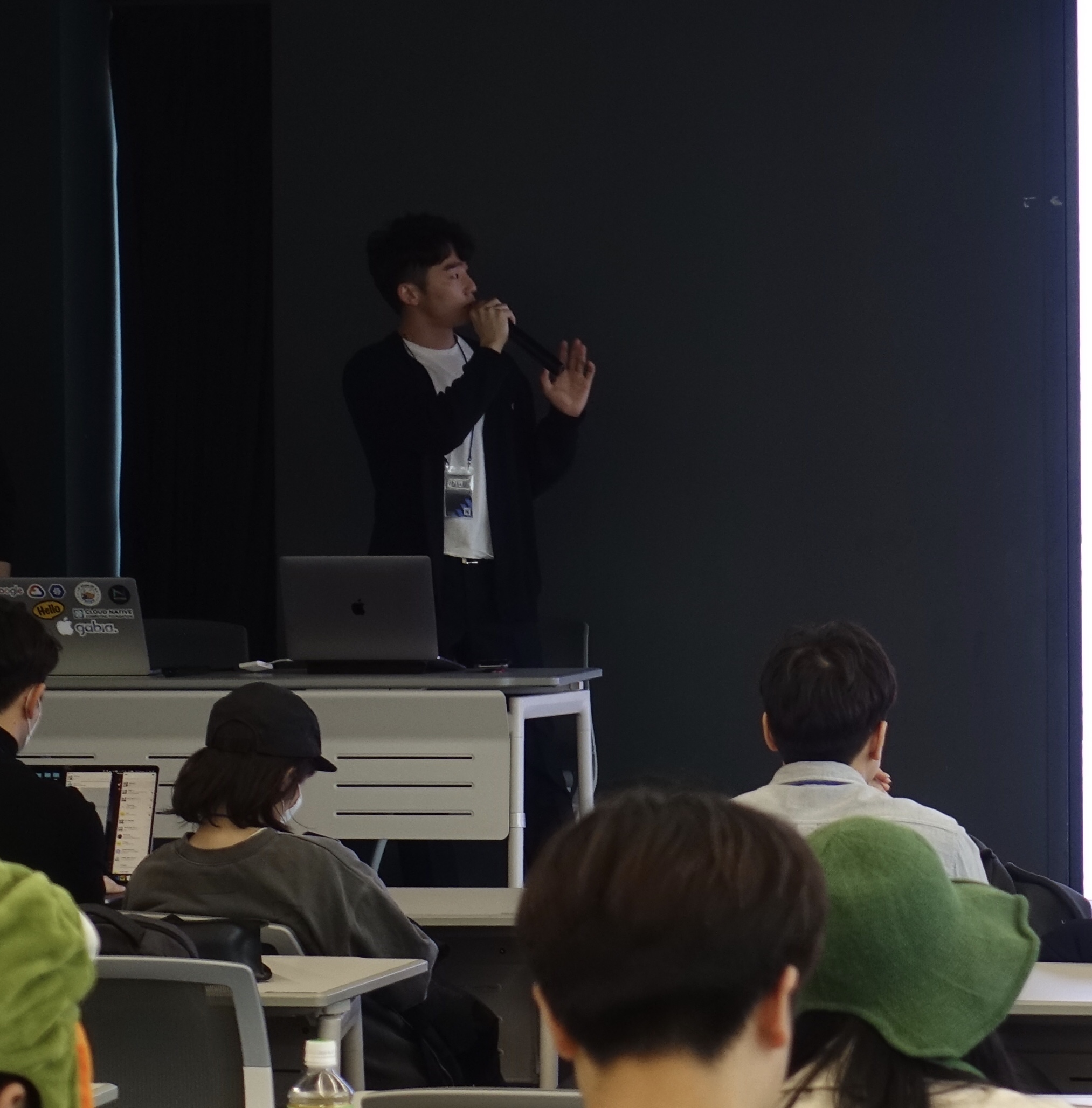[WHITESHIP #1] 8. 인터페이스

#Season1 백기선님과 함께하는 자바 온라인 스터디
목표
자바의 인터페이스에 대해 학습하세요.
학습 내용
- 인터페이스 정의하는 방법
- 인터페이스 구현하는 방법
- 인터페이스 레퍼런스를 통해 구현체를 사용하는 방법
- 인터페이스 상속
- 인터페이스의 기본 메소드 (Default Method), 자바 8
- 인터페이스의 static 메소드, 자바 8
- 인터페이스의 private 메소드, 자바 9
인터페이스란?
인터페이스는 일종의 추상클래스이다. 인터페이스는 추상클래스처럼 추상메서드를 갖지만 추상클래스보다 추상화 정도가 높다고 보면 된다.
인터페이스 정의하는 방법
MyService라는 Interface를 정의해보자.
public interface MyService {
int usePort = 1111;
void initService();
}
위 인터페이스는 다음과 같은 특징이 있다.
멤버변수
위 MyService에는 usePort 멤버변수를 정의하였다. 사실 인터페이스의 모든 멤버변수는 아래와 같은 특징이 있다.
모든 멤버변수는 public static final 이어야 하며, 생략할 수 있다.
int usePort = 1111;
// public static final usePort = 1111;
즉 위 interface에서 정의된 멤버변수를 구현하는 클래스에서는 readOnly다.
메소드
위의 initService라는 메소드 역시 아래와 같은 특징이 있다.
모든 메소드는 public abstract이어야하며 이를 생략할 수 있다.
void initService();
// public abstract void initService();
즉 interface에서 정의된 메소드를 구현하는 클래스에서는 반드시 정의해야 한다.
또한 멤버변수와 메소드는 동일하게 public외 다른 접근제어자는 사용할 수 없다.
인터페이스 구현하는 방법
인터페이스는 구현시 implements 라는 명령어를 사용한다. 또한 일반적인 상속과 다중 구현(상속)이 가능하다.
또한 인터페이스에 정의된 메소드는 반드시 모두 정의 해야한다.
public class MyServiceImpl implements MyService {
@Override
public void initService() {
System.out.println(usePort);
}
}
테스트
테스트 방법은 다음과 같다. (springBoot환경에서 테스트해서 몇가지 어노테이션이 추가로 존재한다.)
- reflection을 이용해서, 인터페이스를 구현클래스의 멤버변수와, 메소드의 접근자를 가져온다.
- 멤버변수는 static, public 이 맞는지 확인한다.
- 메소드는 public 이 맞는지 확인한다.
package com.example.demospringboot.example;
import static org.junit.jupiter.api.Assertions.assertTrue;
import java.lang.reflect.Modifier;
import java.util.stream.Stream;
import org.junit.jupiter.api.DisplayName;
import org.junit.jupiter.api.Test;
import org.springframework.beans.factory.annotation.Autowired;
import org.springframework.boot.test.context.SpringBootTest;
@SpringBootTest
class MyServiceImplTest {
@Autowired
MyService myService;
@Test
@DisplayName("멤버변수 접근자 테스트")
void variableAccessModifierTest() throws NoSuchFieldException {
int modifiers = myService.getClass().getField("usePort").getModifiers();
assertTrue(Modifier.isPublic(modifiers));
assertTrue(Modifier.isStatic(modifiers));
Stream.of(myService.getClass().getInterfaces().getClass().getDeclaredFields()).forEach(System.out::println);
}
@Test
@DisplayName("메소드 접근자 테스트")
void methodAccessModifierTest() throws NoSuchMethodException {
int modifiers = myService.getClass().getMethod("initService").getModifiers();
assertTrue(Modifier.isPublic(modifiers));
Stream.of(myService.getClass().getInterfaces().getClass().getDeclaredFields()).forEach(System.out::println);
}
}

인터페이스 레퍼런스를 통해 구현체를 사용하는 방법
위 인터페이스는 다음과 같이 정의할 수 있다.
MyInterface myInterface = new MyInterfaceImpl();
상속과 동일하게 다형성에 대해 지원하며, 인터페이스 타입의 참조변수로 인터페이스를 구현한 클래스의 인스턴스를 참조 할 수도 있다.
즉 아래처럼 작성할 수 있다.
@Test
void polymorphismExample() {
MyService myService = new MyServiceImpl();
MyService secondMyService = new MyServiceImpl2();
}
자세한 내용은 라이브 스터디의 6주차 내용에 나와있으며, 6주차 (상속) 에서 학습하였던 메소드 디스패치 또한 동작을 한다.
백기선님 라이브 스터디 6주차 상속- 메소드 디스패치(Method Dispatch)
인터페이스 상속
인터페이스는 다른 인터페이스를 상속 받을 수 있으며 다중 상속도 가능하다.
예를들어 아래와 같이 ServiceA, ServiceB 인터페이스를 정의해보자
public interface ServiceA {
void runServiceA();
}
public interface ServiceB {
void runServiceB();
}
그리고 위에서 정의한 ServiceA, ServiceB를 다중상속한 CommonService의 정의는 다음과 같다.
public interface CommonService extends ServiceA, ServiceB {
}
그리고 위에서 정의한 CommonService를 구현한 CommonServiceImpl을 정의해보았다.
이렇게 되면 ServiceA, ServiceB를 구현해야할까? 라는 의구심이 들었는데 아래와 같이 해결되었다.
public class CommonServiceImpl implements CommonService {
@Override
public void runServiceA() {
}
@Override
public void runServiceB() {
}
}
위와 같이 CommonService의 부모 인터페이스(?)의 정의된 메소드는 전부 구현을 해야한다. (미구현 시 컴파일 에러가 뜬다.)
즉 CommonService는 명시적으로 이렇게 정의할 수도 있다.
public interface CommonService extends ServiceA, ServiceB {
@Override
void runServiceA();
@Override
void runServiceB();
}
인터페이스의 기본 메소드 (Default Method), 자바 8
위에서 인터페이스는 일종의 추상 클래스라고 하였다. 그러나 java의 추상 클래스는 메소드를 구현 해놓을 수 있지만, 인터페이스는 java 8 이전에서는 메소드를 구현 할 수 없었다.
java 8부터 지원하는 인터페이스의 Default Method는 메소드 선언이 아니라 구현체를 제공하는 방법이다.
위에서 사용한 initService()를 default method로 변경해보자.
public interface MyService {
default void initService() {
System.out.println("service init!!");
}
}
리턴자료형 앞에 default 키워드를 붙여주고 안에서 동작할 기능을 작성하면 된다.
특징
- 해당 인터페이스를 구현한 클래스를 깨트리지 않고 새 기능을 추가할 수 있다.
- default method는 구현체가 알 수 없기 때문에, 런타임 에러가 발생할 수 있다. (문서화를 잘하자 @ImplSpec javadoc 사용)
- Object가 제공하는 기능(equals, hashcode..)는 기본 메소드를 제공할 수 없다.
- 수정할 수 있는 인터페이스에만 기본 메소드를 제공할 수 있다.
- 인터페이스를 상속받는 인터페이스에서 다시 추상 메소드로 변경 할 수 있다.
- 인터페이스 구현체가 재정의 할 수도 있다.
Inflearn - 더 자바, Java 8 (백기선님 강의) 를 수강하면, 이해하기 쉽게 설명해 주신다.
인터페이스의 static 메소드, 자바 8
static 메소드 역시 Java 8부터 지원한다.
static 메소드는 클래스의 인스턴스 없이 호출이 가능하며, 주로 유틸리티 함수를 만드는데 유용하게 사용된다.
인터페이스의 구현체는 static 메소드를 사용할 수 없으며, 인스턴스를 생성하지 않고 클래스만으로 호출할 수 있는 장점이 있다.
인터페이스의 private 메소드, 자바 9
private 메소드는 Java 9부터 지원한다.
인터페이스 내의 private 메소드는 아래 두 케이스에서만 사용할 수 있다.
- default 메소드
- static 메소드
인터페이스의 default 메소드의 private 메소드
인터페이스를 구현하는 클래스에서 재정의하거나 사용할 수 없는 특징을 가지고 있다.
인터페이스의 static 메소드에서의 private 메소드
인터페이스의 static 메소드를 외부에서 사용할 수 없는 특징을 가지고 있다.(인터페이스 내부적으로만 사용 가능)

Leave a comment